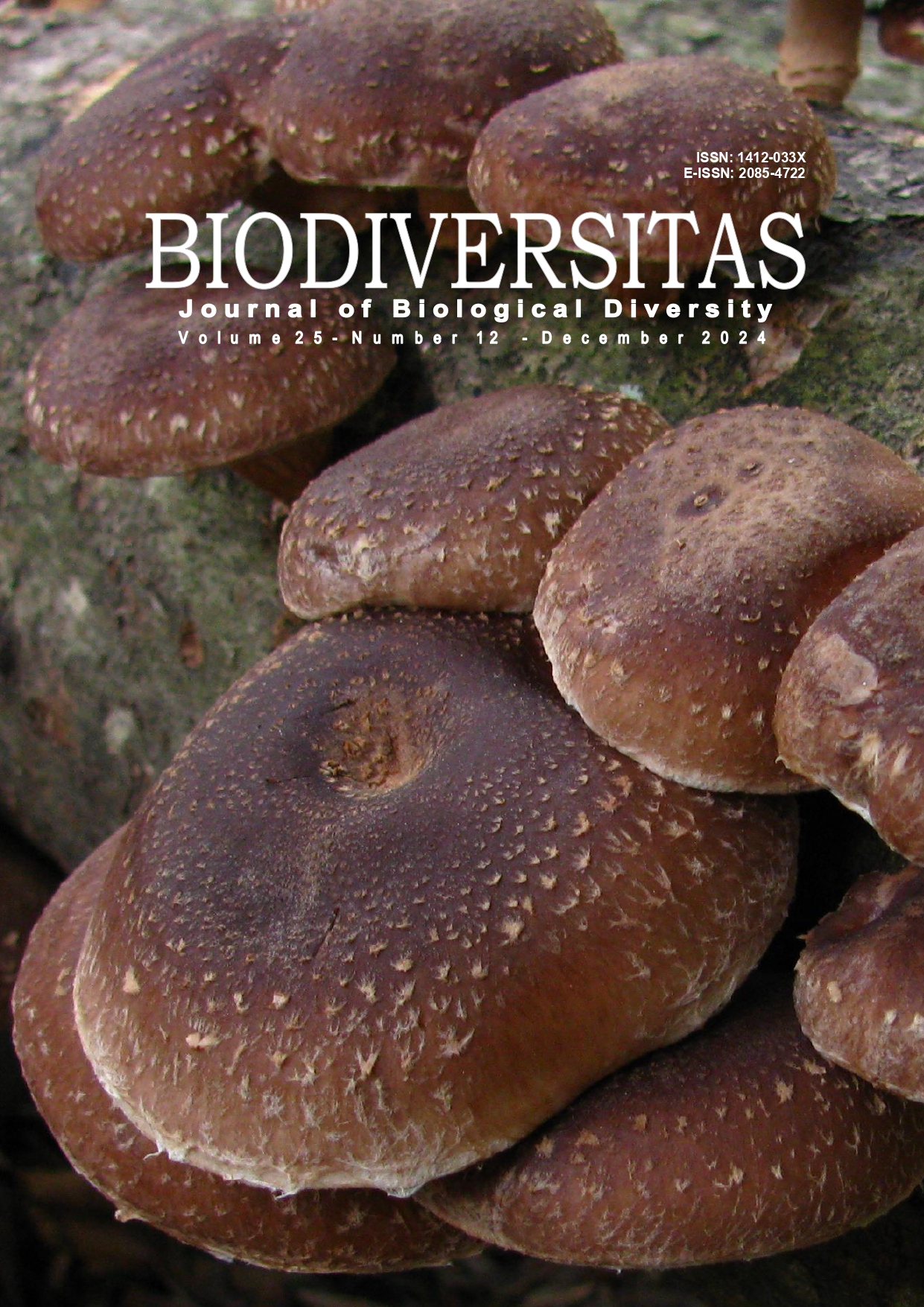Mountain tourism impact on bird diversity along hiking trails of Mount Prau, Central Java, Indonesia
##plugins.themes.bootstrap3.article.main##
Abstract
Abstract. Abdullah M, Hakim L, Siswanto D, Setyowati DL. 2024. Mountain tourism impact on bird diversity along hiking trails of Mount Prau, Central Java, Indonesia. Biodiversitas 25: 4690-4698. Hiking represents a significant dimension of mountain tourism and has gained considerable popularity among travelers. Unfortunately, the perception of hiking activities as a form of mass tourism raises significant concerns regarding potential environmental degradation and the threats posed to biodiversity in mountainous regions. Birds are organisms that are sensitive to human activities. Therefore, a critical component for assessing the impact of mountain tourism on biodiversity is to analyze the diversity of bird species on several hiking trails. This study aims to examine the differences in bird species diversity on several hiking trails with different visitor frequencies on Mount Prau, Indonesia. Surveys for bird observations were conducted systematically using the Variable Circular Plot (VCP) method along the hiking trail. Bird species diversity data were analyzed to obtain Margalef's species richness index, Shannon diversity index, and Pielou's evenness index. In addition, correspondence analysis was also used to see the differences in the composition of bird community species on different hiking trails. Trails with high visitor preferences showed lower species richness, diversity, and evenness indices than rarely visited trails. Ordination analysis showed a clear grouping of bird communities based on species composition between highly visited and less visited routes. Less frequented Mount Prau trails host diverse endemics and high conservation status birds, while heavily frequented trails show reduced diversity. This finding confirms the negative impact of mountain tourism on bird biodiversity in the mountain area. This also signifies the need for a conservation strategy to balance mountain tourism with biodiversity conservation in Mount Prau. It should be able to limit the number of visitors, control access in sensitive areas, and involve methods of ecotourism that would favor wildlife.
##plugins.themes.bootstrap3.article.details##
Most read articles by the same author(s)
- CATUR RETNANINGDYAH, SATRIA CAHYA FEBRIANSYAH, LUCHMAN HAKIM, Evaluation of the quality of mangrove ecosystems using macrozoobenthos as bioindicators in the Southern Coast of East Java, Indonesia , Biodiversitas Journal of Biological Diversity: Vol. 23 No. 12 (2022)
- YOSEPH NAHAK SERAN, SUDARTO SUDARTO, LUCHMAN HAKIM, ENDANG ARISOESILANINGSIH, Sandalwood (Santalum album) growth and farming success strengthen its natural conservation in the Timor Island, Indonesia , Biodiversitas Journal of Biological Diversity: Vol. 19 No. 4 (2018)
- FRANS TONY, SOEMARNO, DEWA GEDE RAKA WIADNYA, LUCHMAN HAKIM, Diversity of reef fish in Halang Melingkau Island, South Kalimantan, Indonesia , Biodiversitas Journal of Biological Diversity: Vol. 21 No. 10 (2020)
- DEDY OETAMA, LUCHMAN HAKIM, TRI D. LELONO, MUHAMMAD MUSA, Health status of coral reef at Moramo Bay Marine Conservation Area, Southeast Sulawesi, Indonesia , Biodiversitas Journal of Biological Diversity: Vol. 25 No. 4 (2024)
- ANNUR HIDAYAT, ENNI SUWARSI RAHAYU, MUHAMMAD ABDULLAH, AMIN RETNONINGSIH, Microsatellites to reveal genetic diversity and to distinguish four mangoes of Tegal District, Central Java, Indonesia , Biodiversitas Journal of Biological Diversity: Vol. 22 No. 8 (2021)
- IHWAN, USLAN, WIDODO, LUCHMAN HAKIM, Genetic diversity of Rhizophora mucronata in eastern region of Timor Island, Indonesia as revealed by RAPD , Biodiversitas Journal of Biological Diversity: Vol. 20 No. 11 (2019)
- SLAMET MARDIYANTO RAHAYU, JATI BATORO, KURNIASIH SUKENTI, LUCHMAN HAKIM, Ethnobotanical study of peraq api ritual in Sasak Tribe of Lombok Island, Indonesia and its potential for sustainable tourism , Biodiversitas Journal of Biological Diversity: Vol. 24 No. 10 (2023)
- RIA KARNO, ENDANG ARISOESILANINGSIH, IRFAN MUSTAFA, DIAN SISWANTO, Effectiveness of micro-nanobubble aeration and phytoremediation in treating filtered palm oil mill effluent on bacteria diversity and water properties , Biodiversitas Journal of Biological Diversity: Vol. 25 No. 11 (2024)
- DEDY OETAMA, LUCHMAN HAKIM, TRI D. LELONO, MUHAMMAD MUSA, Mangrove condition at a marine conservation area at Moramo Bay, Sulawesi, Indonesia , Biodiversitas Journal of Biological Diversity: Vol. 24 No. 12 (2023)


 https://orcid.org/0000-0002-6059-3341
https://orcid.org/0000-0002-6059-3341